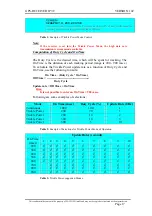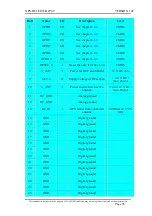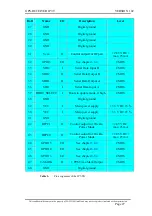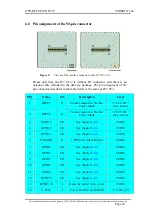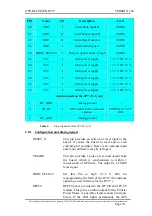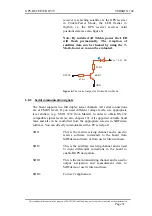
GPS-RECEIVER JP7-T
VERSION 1.02
6.2 Description of GPS receiving signals
When the GPS receiver is initially turned on, it begins to determinate its
current positions, velocity and time. In order to perform a successful start it
must have a current almanac, a reasonable expectation of its current location
and a reasonable idea of the current time. When the Ephemeris data are
completely collected, then satellite signals are tracked continuously and the
position is calculated from time to time.
While the receiver trying to obtain a position fix, it needs to be locked-on to
at least four satellites. In order to calculate quickly its current location, the
receiver uses the current received signals, together with data from its
memory (SRAM).
The initial state of the receiver refers to the last status of the receiver in
memory (SRAM). This essentially determines the length of time it will take
for the receiver to obtain a GPS fix. Position can be quickly fixed within 8
seconds from a "hot-start" state, and typically 45 seconds from a "cold-start"
state.
The receiver uses the satellite signals to calculate its exact current location
by calculating the receiver distance from the satellites. The position data
within the receiver is then converted into latitude and longitude coordinates,
which are usually provided in the geodetic datum on which the GPS is based
(WGS84).
6.3 Start-Up
Modes
The start-up modes of the JP7-T family depend on the last stored position in
the SRAM memory, such as the current time and ephemeris data. So that the
JP7-T family can be initiated to one of three different start up procedures,
but note that only one can be initiated at a time. In order to perform a Warm
and Hot start, a backup battery has to be connected to the JP7-T family.
Without an external backup battery the receiver will perform a cold start
after every turn on. To achieve the faster start-up offered by a hot or warm
start, a backup battery must be connected. To maximize battery lifetime, the
battery voltage should not exceed the maximal supply voltage and should be
between 2.85 V and 3.15 V.
6.3.1 Cold
start
The unit stores data about where the satellites are located at any given time.
The data is called almanac. Occasionally, when the JP7-T family has been
turned off for a long time, the almanac can get out-dated or “cold”. The cold
start takes place when the receiver does not know its last position or time. In
this start-up mode, the receiver either does not operate under back-up power
conditions or it is the first start-up time (i.e. no idea about ephemeris or
almanac data). At this time, the Ephemeris data has yet to be completely
collected. Once the ephemeris data is collected from in view satellites, then
the data from these satellites is considered valid and available for
navigation. This start up scenario is one of the longest time which the
receiver will take to obtain a GPS fix.
This confidential document is the property of FALCOM GmbH and may not be copied or circulated without permission.
Page 20












